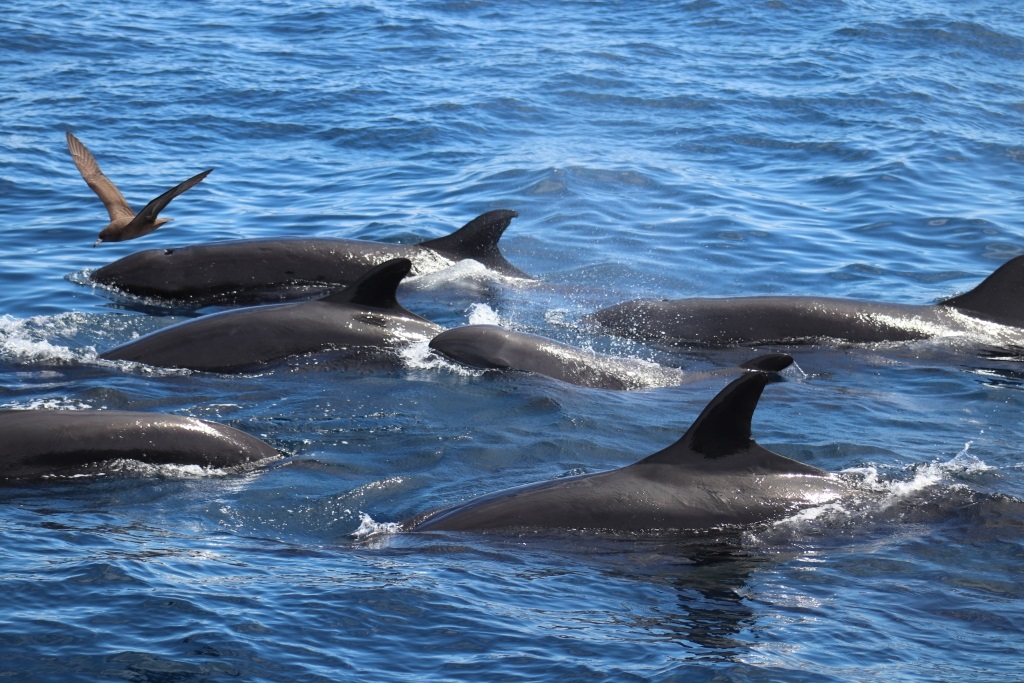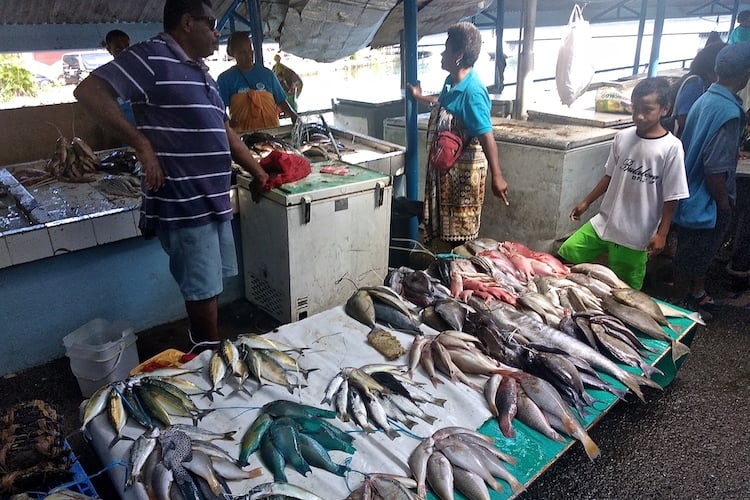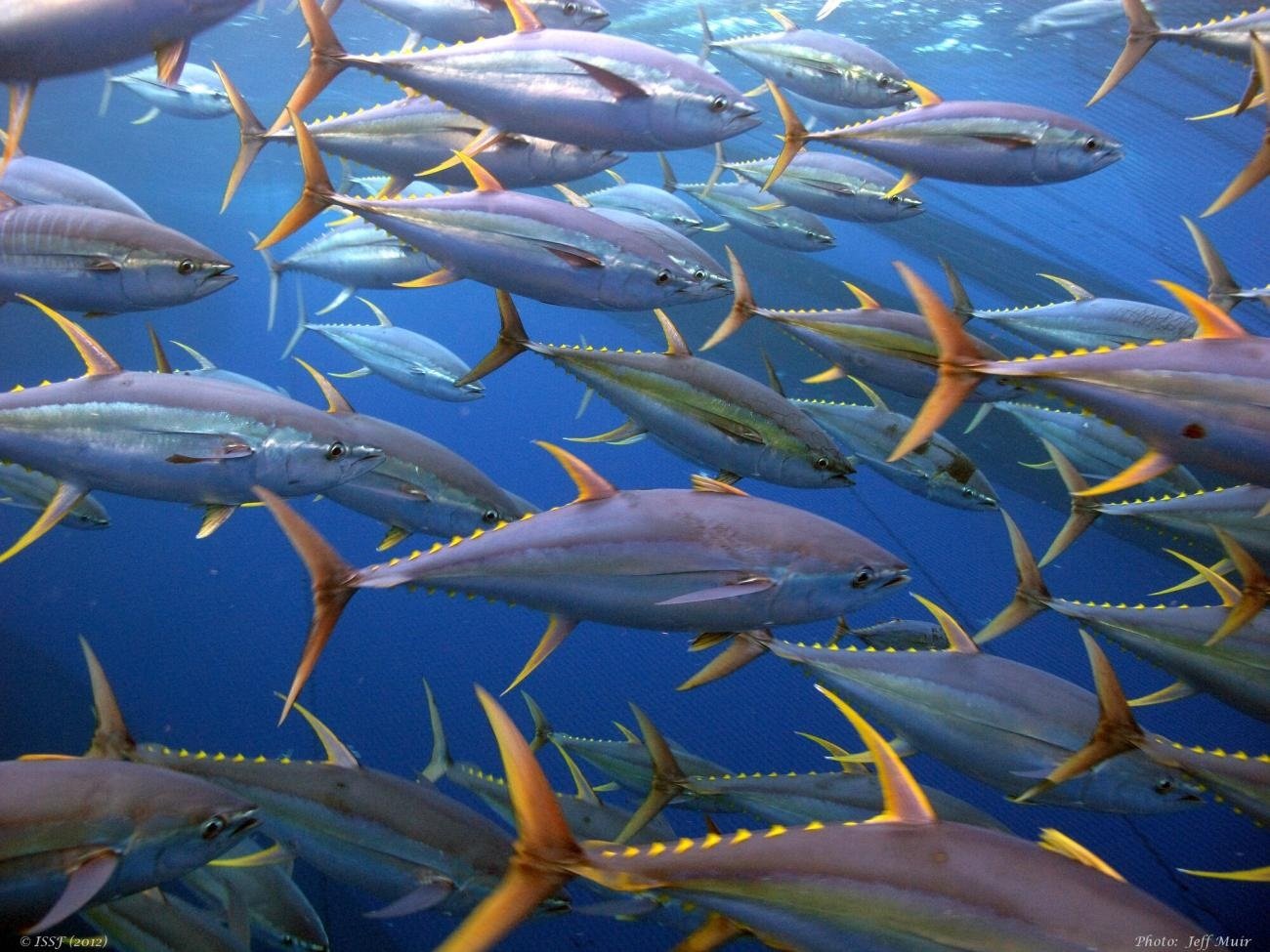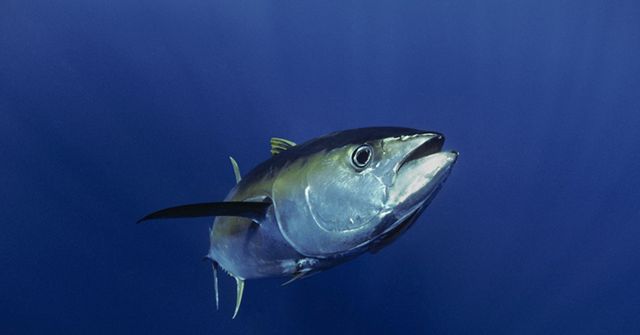A new report highlights fisheries by-catch from commercial oceanic longline and purse seine fisheries is the current greatest threat to populations of whales and dolphins in the Pacific
A report released by the Secretariat of the Pacific Regional Environment Programme (SPREP) early March provides deeper insight on the status of cetaceans (whales and dolphins) in the waters surrounding the Pacific island countries and territories.
The Review of Cetacean Diversity, Status and Threats in the Pacific Islands region 2021 updates a 2008 review of the cetacean populations found in the region and the various threats to their existence. The review was undertaken by SPREP’s By-catch and Integrated Ecosystem Management (BIEM) Initiative aimed at improving conservation and sustainable management of marine biodiversity. The BIEM Initiative is a component of the Pacific-European Union Marine Partnership (PEUMP) Programme funded by the European Union and the Government of Sweden.
More than 30 different species of cetaceans are found in Pacific waters, from the large migratory blue whales and fin whales to small dolphins such as the Australian snubfin dolphin that lives in river deltas and estuaries.
Report author, Dr Cara Miller said, “There are verified records for 34 different cetacean species across the Pacific islands region – this makes up almost half the species known in the world. However, it is very likely there are more species in the region that have not yet been observed or documented.”
The report carried out an extensive literature review, including both published and unpublished information and verified anecdotal reports, with over 300 references cited.
Oceanic tuna fisheries cetacean by-catch
A key finding of the review is that by-catch from commercial oceanic longline and purse seine fisheries is the current greatest threat to populations of whales and dolphins in the Pacific.
The Pacific Community database of fisheries observer reports is the primary source of information on how whales and dolphins interact with purse seine and longline fisheries in the region. The report notes that estimated annual rates of marine mammal by-catch in the regional purse seine fishery are in the thousands every year, ranging from 1,623 in 2003 to 3,861 in 2013. The average estimated for the five most recent years with full available data (2015 – 2019) is 1,942 per year of marine mammals caught in purse seine fishing gear.
In the longline fishing industry, between 2015 and 2019, 298 cetaceans (comprising 27 cetacean species or species groups) were reported by observers to have been caught on longline fishing gear. This is from very low observer coverage levels of usually less than 5%. There were high numbers of interactions recorded between 2015 and 2019 (pre-COVID pandemic), with 2,131 individuals from 20 species and species groups reported to have engaged in “non-gear” interactions with longline fishing vessels. “Non-gear” interactions refer to cetacean sightings where the animals swim alongside the vessel but do not become entangled or accidentally caught.
The report highlights the need for more information to better assess the impact that fisheries by-catch could have on the populations of different species of whales and dolphins. The longline fishery suffers from limited numbers of observers on board fishing vessels and the report calls for greater observer coverage to enable improved and accurate reporting.
“The impact of fisheries interactions on species and populations is difficult to assess without more accurate information on the distribution and population levels of the cetacean species interacting with the fisheries as well as more accurate information from the longline fishery on numbers of interactions,” says Dr Miller.
“We also need to improve our understanding of important characteristics of these species and other factors that may affect the level of risk to their survival,” Dr Miller explains.
“For example, we need to know their current population numbers, birth rates, whether there are any biological factors that affect their survival, and if there are particular habitats they prefer.”
Other threats
In addition to oceanic fisheries by-catch, the report discusses other threats to cetaceans. These include entrapment in “ghost gear” (discarded or lost fishing nets and lines) and abandoned drifting Fish Aggregating Devices (d-FADs); by-catch in coastal fisheries; hunting; ship strikes; pollution, including noise pollution and microplastics; and disease, which may also be the result of poor land-based waste disposal practices.
Deep Sea Mining is highlighted as a potentially serious emerging issue, exacerbating some of the current threats, while climate change is identified as the most significant long-term threat to cetaceans in the Pacific Islands region.
“Migratory baleen whales feed largely on krill in the Antarctic Ocean during the summer and come to the warmer Pacific waters to breed,” says Dr Millar. “These animals will be especially at risk from warming sea water, because krill can only survive in very cold water.”
Karen Baird, SPREP Threatened and Migratory Species Adviser, said “SPREP is pleased to have produced this important report, which is a significant contribution to the body of knowledge on cetaceans in the region. The report recommendations will be shared with our national Members, CROP partners and Regional Fisheries Bodies. We hope Members will support improvements in data collected and monitoring of fisheries by-catch and other improvements to the way we manage cetacean by-catch. Further research on cetacean diversity, distribution and populations across the region is a priority and has also been endorsed by the UN Ocean Decade of Science as part of an action on ‘threatened and migratory marine species science’, priorities for which are included in SPREP’s Pacific Island Regional Marine Species Programme 2022-2026.
This story was originally published at SPREP on 10 March 2023, reposted via PACNEWS.




